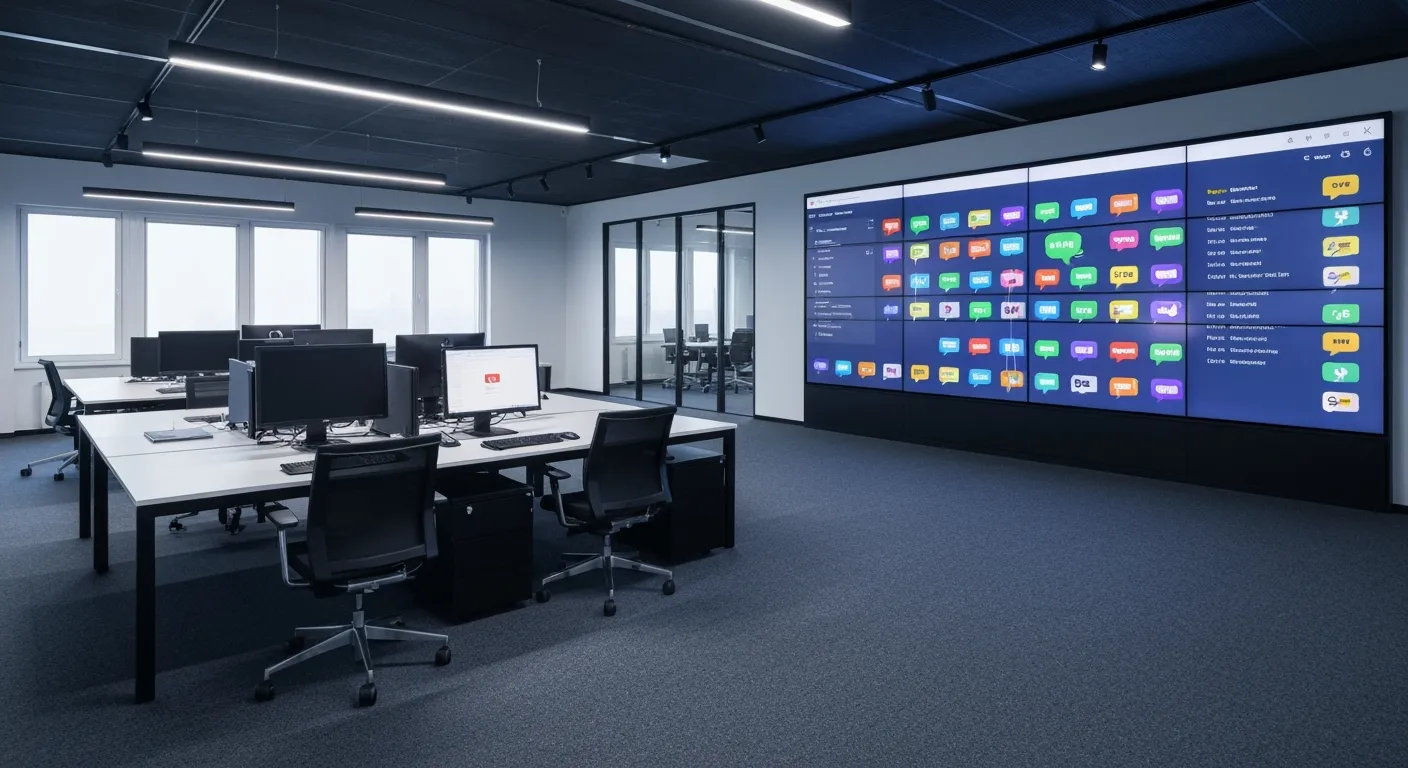Why Text Messaging is Essential for Modern Event Marketing
In today’s fast-paced world where digital clutter is overwhelming, event organizers face the challenge of capturing and maintaining audience attention. Text messaging (SMS) emerges as a compelling solution, boasting open rates near 98% and response rates far exceeding traditional channels like email and social media. This narrative explores how leveraging strategic SMS campaigns can supercharge event attendance, enrich guest engagement, and streamline event communication across all stages.
Understanding the Impact: Why SMS Outperforms Other Channels
What makes SMS more effective than email for event communication?
Text messaging stands out in event communication primarily due to its exceptional open and click-through rates. SMS messages boast an average open rate of 98%, vastly outpacing emails, which typically hover between 20% and 30%. The click-through rate of SMS is also impressive at around 19%, indicating recipients are not only opening but actively engaging with messages.
Comparison of SMS open and click-through rates versus email and social media
| Channel | Open Rate | Click-Through Rate | Typical Use in Events |
|---|---|---|---|
| SMS | 98% | 19% | Immediate reminders, updates, and engagement |
| 20-30% | Lower than SMS | Detailed invitations, newsletters | |
| Social Media | Variable | Lower engagement | Broad promotions, event teasers |
Speed and immediacy of text message consumption
SMS messages are usually read within minutes of receipt—90% within the first three minutes—making them ideal for urgent or time-sensitive information like last-minute changes or reminders. This rapid consumption aids event organizers in ensuring important details reach attendees promptly, benefiting from the immediacy of SMS communication.
SMS accessibility without apps or login
Unlike many digital channels that require apps, accounts, or internet access, SMS is universally accessible on virtually all mobile phones. This ease of access removes barriers to engagement and ensures that messages can be delivered and read regardless of the recipient's technology preferences, reflecting the accessibility in text messaging.
High engagement and response rates from SMS
SMS encourages quick responses, with 90% of recipients replying within three minutes in some contexts. The concise nature of text messages simplifies reading and responding, encouraging higher participation levels—from RSVPs to feedback surveys—compared to email or social media approaches. This is supported by high engagement and response rates in SMS.
In summary, SMS's near-instant delivery, universal accessibility, and high engagement metrics make it a superior channel for event communication compared to email and social media. These attributes ensure event messages are seen, acted upon, and foster stronger attendee connections, highlighting the power of SMS for event marketing and management.
Crafting a Winning Pre-Event SMS Strategy
How should SMS campaigns be structured before an event to maximize attendance?
A successful pre-event SMS campaign is most effective when it includes 7 to 10 touchpoints that are well-timed and purposeful. These touchpoints should start with personalized invitations that clearly state the event details and are tailored to different audience segments, such as VIPs or past attendees, ensuring relevance and increasing engagement through segmenting audiences for SMS campaigns.
Incorporating countdowns, reminders, and teasers keeps the excitement building. For example, countdown texts can create anticipation by highlighting how many days remain until the event. Reminders sent at optimal times — often mid-morning or early evening — help guests keep the event top-of-mind. Teasers with links to exclusive content or other marketing channels promote multi-channel engagement, enriching the overall experience.
Personalization techniques—such as including the recipient's name, referencing past attendance, or using geo-targeting—make messages feel conversational and direct. Clear call-to-actions (CTAs) are crucial; they should be concise and direct recipients to RSVP, register, or learn more with a simple click or reply.
Legal compliance is essential to build trust and avoid penalties. Collect explicit opt-in consent before sending messages, and employ double opt-in methods to confirm subscriber interest. This approach ensures a quality subscriber list and aligns with regulations like TCPA.
By structuring SMS campaigns with these strategies, organizers can significantly improve attendance rates and create a more engaged audience ahead of the event.
Maximizing Engagement During the Event with Real-Time SMS
What roles can SMS play during an event to enhance participation?
SMS serves multiple important roles to foster active participation and smooth event flow. It welcomes attendees with friendly greetings, setting a positive tone right from the start. Throughout the event, organizers use SMS to send timely reminders about upcoming sessions, helping guests stay informed and engaged.
Interactive Q&A sessions become seamless with SMS by allowing attendees to submit questions via text. This two-way interaction encourages more audience involvement without disrupting the event. Fundraising efforts also benefit from SMS through text-to-donate features, enabling attendees to contribute easily and instantly.
Logistical updates, such as room changes, schedule adjustments, or directions, can be quickly communicated through SMS, improving the overall attendee experience. Emergency notifications delivered by SMS ensure swift and reliable alerts if unexpected situations arise, enhancing safety.
Moreover, internal staff communication via SMS helps coordinate event teams efficiently, addressing last-minute changes and operational needs to keep the event running smoothly.
By integrating these real-time SMS strategies, event organizers can significantly elevate guest engagement, interaction, and satisfaction during the event.
Leveraging Post-Event SMS for Lasting Impact
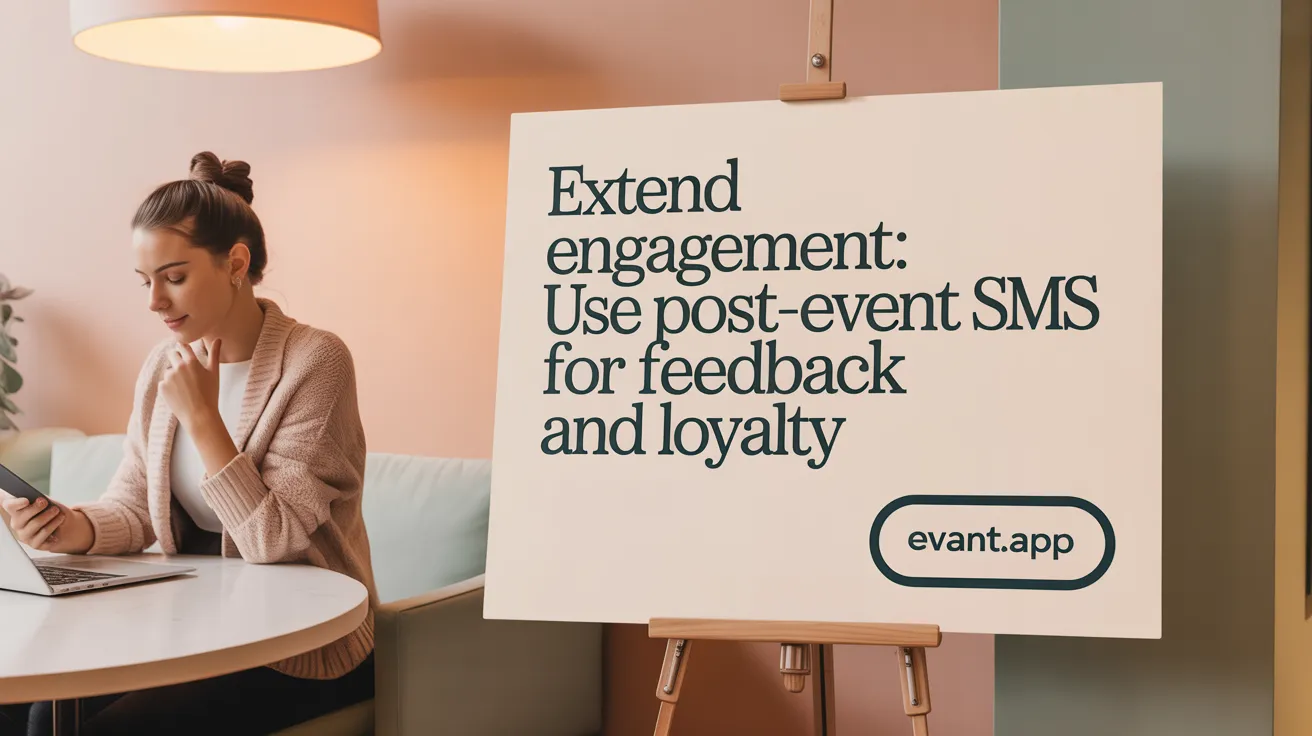
How can post-event SMS communication benefit organizers?
Post-event SMS messages enable event organizers to swiftly collect invaluable attendee feedback using surveys. These texts boost response rates due to SMS's immediate and easy-to-use nature, with most messages read within minutes. Surveys sent by SMS deliver quick insights into attendee satisfaction and suggestions for improvement, helping organizers tailor future events to meet audience preferences. Using post-event SMS surveys is a proven way to gather valuable feedback efficiently.
Thank-you messages sent via SMS after an event are essential for building lasting loyalty. Personalized appreciation notes convey gratitude, strengthen relationships, and encourage recipients to attend future events. This personal touch nurtures a positive community sentiment and keeps attendees engaged long after the event concludes, as shown in best practices for thank-you messages by SMS.
Utilizing data gathered from post-event SMS surveys integrated into CRM systems allows event planners to monitor trends, track engagement metrics, and refine marketing strategies. This integration streamlines feedback management and supports data-driven decisions to enhance subsequent events, leveraging CRM integration with SMS feedback.
Maintaining ongoing communication through periodic SMS updates nurtures community building. By sharing relevant news, upcoming events, and exclusive content, organizers sustain engagement over time, transforming one-time attendees into active and loyal supporters. Effective ongoing communication with attendees is key for sustained success.
Overall, a well-executed post-event SMS strategy boosts feedback collection, fosters loyal communities, and strengthens future event success.
Audience Segmentation and Personalization: Keys to SMS Success
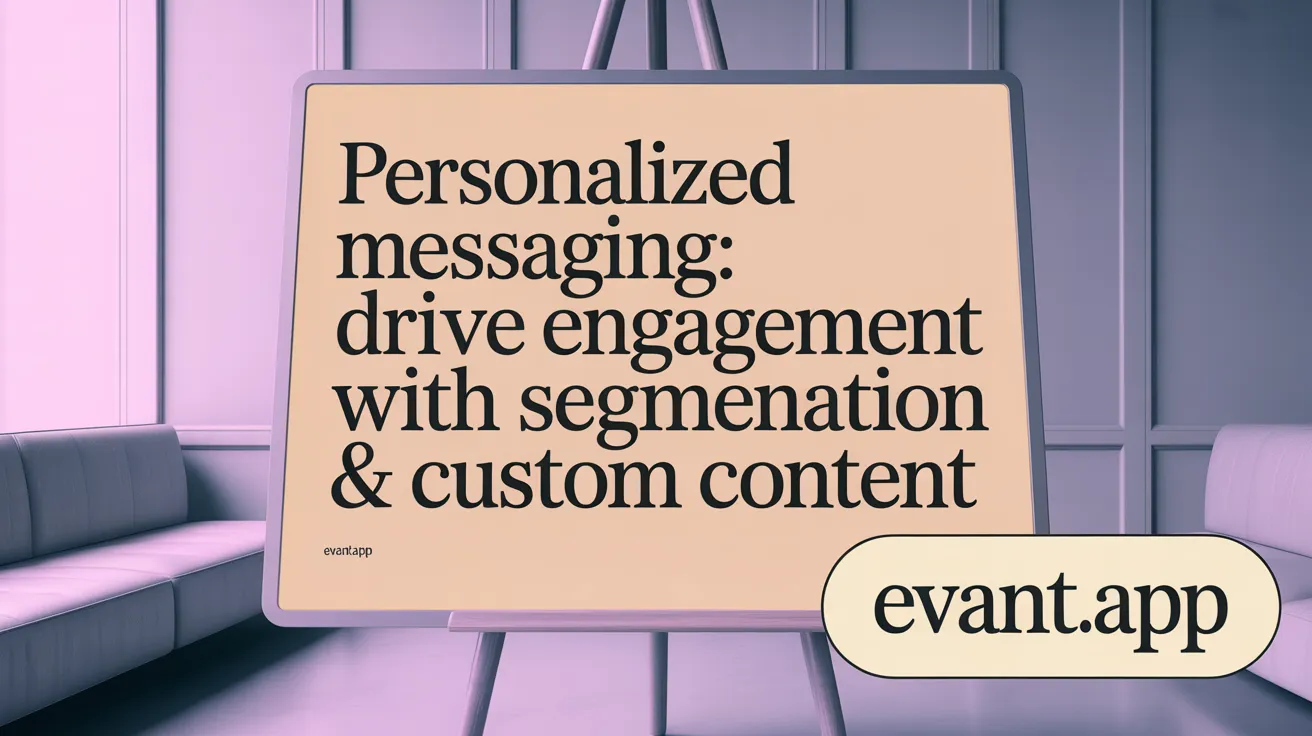
Why is segmentation and personalization important in SMS event marketing?
Segmentation and personalization are crucial in SMS event marketing because they enable messages to be targeted and relevant to each subgroup of attendees. By dividing the audience by registration status (e.g., registered vs. non-registered), interests, or demographics, organizers can send tailored messages that better resonate with each specific group. Learn more about audience segmentation in SMS campaigns.
For example, VIP attendees may receive exclusive invitations or loyalty offers, first-time guests might get welcome messages that emphasize event highlights, and repeat participants can be reminded of sessions aligned with their interests. This precise targeting prevents generic messaging, which can be easily ignored. Discover effective ways of segmenting audience for SMS campaigns and personalizing SMS messages.
How does tailoring messages improve engagement?
Customized SMS messages that include the recipient's name, reference the particular event they are attending, and use localized content (such as mentioning nearby venues or region-specific information) create a personal touch. Such targeted communication feels conversational and direct, resulting in higher open rates—around 98% compared to much lower averages for emails. See details on SMS open rate advantages and the benefits of SMS marketing.
By speaking directly to attendees' interests and needs, messages become more relevant and persuasive, increasing response and click-through rates. Attendees are more likely to act on reminders, RSVP requests, and interactive surveys when the texts reflect their connection with the event. Learn how targeted SMS reminders and interactive SMS elements boost engagement.
Benefits of segmentation and personalization summarized:
- Allows focused communication for subgroups like VIPs or newcomers
- Enhances message relevance with names and event-specific details
- Uses location-specific content to make messages more trustworthy
- Improves open and engagement rates significantly
Organizers who implement segmentation and personalization see measurable improvements in attendance, engagement, and overall event success, proving these tactics are essential components of effective SMS marketing strategies.
Timing is Everything: When to Send Your Event Texts
What are the best timings for sending SMS to maximize engagement?
Sending SMS messages during mid-morning (around 10-11 AM) or mid-afternoon (2-4 PM) has been shown to achieve the highest engagement rates. These times align with when recipients are most likely to read and respond to texts, making your messages more effective for promoting events. For more on optimal timing for SMS reminders and SMS open rate advantages.
Optimal time frames for sending SMS reminders and invitations
A strategic, staged SMS campaign enhances event attendance:
- Early Invitations: Send initial invites several weeks before the event to build awareness.
- Follow-up Reminders: Dispatch reminders about a week prior to keep the event top of mind.
- Last-minute Nudges: Send final texts 24 to 48 hours before the event to reduce no-shows.
This timing structure ensures consistent engagement without overwhelming recipients. Check tips on timing SMS messages and event reminder text strategies.
Avoiding off-hours and respecting recipients' time zones
To maintain goodwill and maximize the chance of messages being read promptly, avoid sending texts during early mornings, late nights, or outside regular business hours. Tailoring messages to recipients' local time zones ensures they receive texts at appropriate and convenient times, enhancing response rates. Learn more about personalized SMS timing and using local area codes in SMS.
Using automation tools to maintain consistent timing
Automation platforms like Mailchimp, HubSpot, and DialMyCalls enable event organizers to schedule SMS campaigns efficiently. Automation tools help maintain consistent timing across large contact lists, personalize delivery by time zone, and allow easy integration with other marketing channels. This reduces manual effort and ensures messages are sent when they're most impactful. Explore SMS marketing automation and automated SMS reminders for events.
By carefully timing your SMS communication, you can boost event attendance, reduce no-shows, and keep your audience engaged with well-paced, respectful messaging. For deeper insights on reducing no-shows with SMS reminders and effective SMS communication strategies.
Integrating SMS with Multi-Channel Marketing Campaigns

How can SMS be integrated with other marketing channels effectively?
Integrating SMS with email and social media marketing creates a powerful, unified approach that leverages the strengths of each channel. SMS messages boast an impressive 98% open rate, ensuring immediate visibility, while emails provide a platform for detailed content and social media offers interactive engagement. Combining these channels boosts overall campaign reach and effectiveness.
Cross-linking SMS messages to emails, event pages, and social content helps guide recipients seamlessly through the event journey. For example, SMS can send a concise reminder with a link to a full event schedule hosted on a website or encourage sharing via social media, reinforcing engagement. This strategy is supported by effective SMS call-to-action techniques and templates for event SMS communication.
Automation platforms such as HubSpot, Mailchimp, and DialMyCalls enable event organizers to streamline communications. These tools coordinate the timing of messages and trigger SMS reminders or follow-ups based on recipient actions, such as registration or RSVP responses. Workflow automation ensures timely delivery and reduces manual effort.
A unified marketing approach leads to several benefits: increased attendance rates, stronger relationships through consistent messaging, and improved tracking of engagement metrics across channels. Event professionals find that integrating SMS with other digital marketing efforts creates a holistic experience for attendees, fostering excitement, participation, and efficient feedback collection post-event. For additional best practices, see strategies for engaging event guests with text messages.
Legal Compliance and Subscriber Management in SMS Campaigns
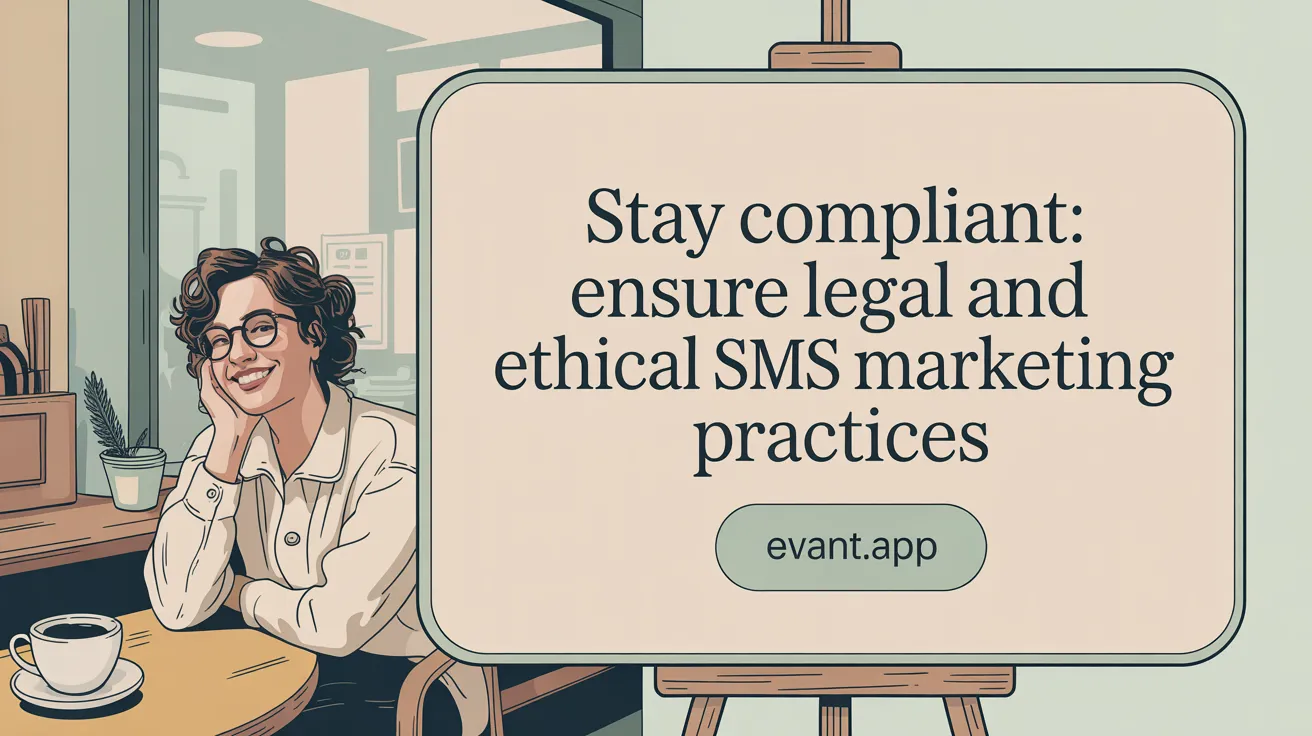
What legal considerations must be observed when conducting SMS event marketing?
Legal compliance is a cornerstone of effective SMS event marketing. Organizers must first obtain explicit opt-in consent from recipients before sending any text messages. This consent process is often strengthened by double opt-in strategies, which require users to confirm their subscription twice, ensuring clear permission and adherence to legal frameworks such as the Telephone Consumer Protection Act (TCPA) and 10DLC regulations.
Equally important is providing recipients with easy-to-use opt-out mechanisms, typically by including instructions like "Reply STOP to unsubscribe" in every message. This respects subscriber preferences, preserves trust, and helps organizations avoid costly penalties associated with non-compliance. These practices are part of SMS compliance best practices.
Maintaining list health involves not only managing opt-ins and opt-outs but also respecting message frequency to avoid overwhelming recipients. Protecting subscriber data privacy is critical, requiring careful list management and secure handling of personal information. For comprehensive insights, see SMS marketing do's and don'ts for text messaging strategy.
By following these guidelines, event marketers can build a receptive audience, maintain high engagement levels, and ensure long-term success in SMS campaigns while staying fully compliant with legal requirements. For further best practices and compliance tips, visit 10 Higher Ed Text Messaging Best Practices.
Measuring Success: Tracking and Optimizing SMS Campaigns
How should event marketers measure and optimize their SMS campaigns?
To ensure SMS campaigns achieve their full potential, event marketers need to focus on several key metrics. These include delivery rates, open rates (often reaching about 98%)1, click-through rates (CTR)2, conversion rates, and opt-out rates. Monitoring these indicators allows organizers to understand how recipients interact with messages and which types drive the most engagement3.
What key metrics are essential?
- Open Rates: Measures how many recipients open the messages, indicating message visibility1.
- Click-Through Rates (CTR): Tracks how many recipients tap on links within messages, showing interest and engagement2.
- Conversion Rates: Reflects actions taken post-click, such as event registrations or donations4.
- Opt-Out Rates: Indicates subscriber dissatisfaction or message fatigue, important for list health5.
How can analytics refine SMS marketing?
Using analytics tools, marketers can adjust content to be more personalized and compelling, optimize message timing to mid-morning or early evening6, and target segmented audience groups to improve relevance7. Continuous testing and tracking improve campaign effectiveness and help maximize return on investment8.
What platforms offer effective reporting?
Platforms such as HubSpot9, Mailchimp10, and Salesmsg11 provide comprehensive analytics dashboards. These tools track message delivery, engagement, and conversion, supporting multi-channel integration and automation. They facilitate iterative improvements by providing insights into subscriber behavior12.
Examples of successful SMS campaigns
Event marketers have reported significant boosts in attendance and engagement by sending timely SMS reminders and segmented messages13. For instance, some SMS campaigns generated hundreds of registrations within minutes and reduced no-shows by up to 45%14. These successes highlight the power of data-driven SMS marketing to optimize event outcomes15.
| Metric | Importance | How it Helps |
|---|---|---|
| Open Rate | Measures message visibility | Ensures messages are seen1 |
| Click-Through Rate | Measures engagement | Gauges interest in event or offer2 |
| Conversion Rate | Measures final action | Tracks impact on event attendance4 |
| Opt-Out Rate | Measures subscriber churn | Maintains healthy contact list5 |
| Delivery Rate | Measures message reach | Confirms messages are received16 |
Enhancing SMS with Multimedia and Interactive Features
What interactive and multimedia options can improve SMS engagement for events?
Incorporating multimedia through MMS messages—for example, images, videos, and GIFs—significantly boosts the visual appeal and engagement of SMS communications. These rich media elements help messages stand out in crowded inboxes, making event announcements, reminders, and updates more memorable and impactful (Using SMS and MMS for Multimedia Event Content, Incorporating images and GIFs in MMS).
Interactive SMS features elevate attendee involvement beyond passive message reception. Two-way messaging enables guests to RSVP directly via text, submit questions during Q&A sessions, and engage in live polls and surveys. This real-time interaction encourages active participation and personalized communication (Two-way messaging in events, Facilitating questions for speakers, Using Text Message Surveys).
Additionally, text-to-donate campaigns provide a convenient way to raise funds, allowing attendees to contribute swiftly using their phones (Text-to-donate options). Similarly, text-to-join or text-to-enter sweepstakes invite recipients to participate in contests or subscribe to updates, effectively growing contact lists and fostering continuous engagement (Text-to-enter sweepstakes, Growing SMS subscriber list).
Leveraging these multimedia and interactive strategies increases visibility and enriches the overall event experience. Guests feel more connected and are more likely to act on the communications, ultimately maximizing event turnout and involvement (High open rate of texts, Enhancing guest experience with technology.
Case Studies and Real-World Results: SMS in Action
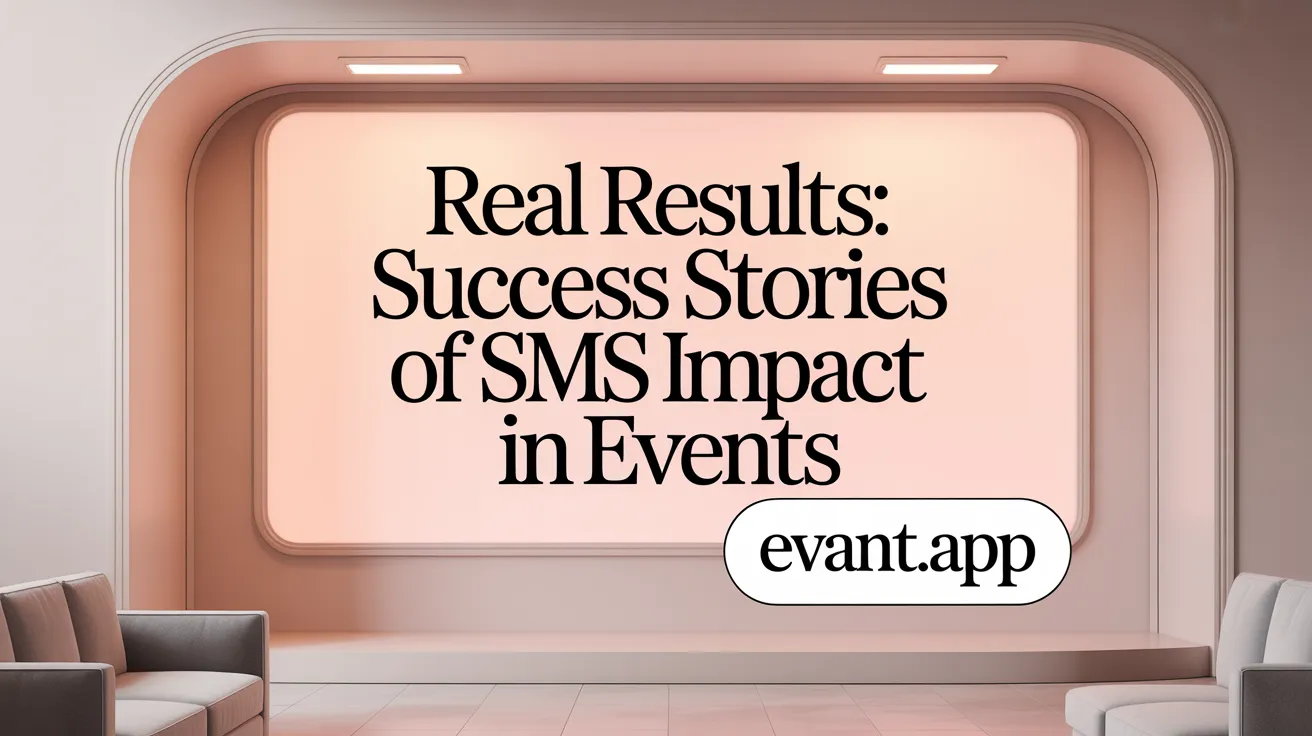
Are there concrete examples demonstrating the effectiveness of SMS for event attendance?
Yes, there are several concrete examples showcasing the impact of SMS messaging on event attendance. Northumbria University experienced a 5-10% increase in event attendance by sending timely SMS reminders. They also saw a 15% boost in email open rates, indicating enhanced overall engagement when combining SMS with email campaigns.
Many industries report significant reductions in no-shows—between 38% and 45%—after integrating SMS confirmations and reminders. This demonstrates SMS's power to prompt timely responses and reinforce commitment to attend.
Organizations like Morning Brew and Talk Media have successfully used SMS to improve logistics and participant engagement during events. Morning Brew's use of SMS during their annual summit resulted in seamless event management and increased attendee involvement. Talk Media achieved participation rates above 95% in a virtual event by leveraging two-way SMS communication.
Operational efficiencies from SMS integration include reduced staffing needs for reminders, decreased printing costs, and improved real-time communication capabilities. These factors contribute to a better return on investment (ROI) and smoother event execution.
Overall, SMS is a cost-effective and impactful tool proven to increase attendance, reduce last-minute cancellations, and enhance event operations across multiple sectors.
Harnessing SMS: The Future of Event Attendance and Engagement
The compelling statistics and practical successes confirm that SMS is a transformative tool for event promotion and management. Its unparalleled open rates, immediacy, and affordability empower organizers to effectively reach and engage diverse audiences. By integrating strategic pre-event planning, real-time interaction, post-event follow-up, and strict compliance, SMS campaigns can consistently boost attendance and enhance the overall event experience. As technology and audience expectations evolve, embracing SMS as a central communication pillar positions event professionals at the forefront of engagement innovation.
High open rate of texts↩
Click-through rate of 19%↩
Tracking SMS engagement metrics↩
Conversion rates and event registrations↩
SMS subscriber opt-out considerations↩
Segmenting audiences for SMS campaigns↩
Maximizing SMS marketing ROI↩
Integrating SMS with HubSpot↩
Mailchimp for SMS marketing↩
Salesmsg SMS campaign analytics↩
SMS marketing platforms for events↩
Examples of successful SMS event campaigns↩
Reducing no-shows with SMS reminders↩
The power of SMS for event marketing↩
Ensuring message delivery in SMS campaigns↩
Related Blogs


RSVP Tools: Best Options, Google RSVP Limitations & Why Text Wins
Michael PedoeemExplore the best RSVP tools, Google RSVP’s limitations, and why text RSVP is the most efficient for event planning with instant confirmations and reminders.


My School SMS: Bridging the Gap between Schools, Parents, and Students
Michael PedoeemMy School SMS - What's it all about
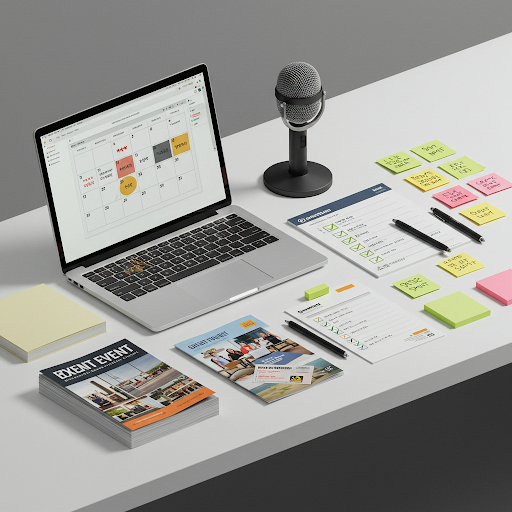

Ready to transform your community



